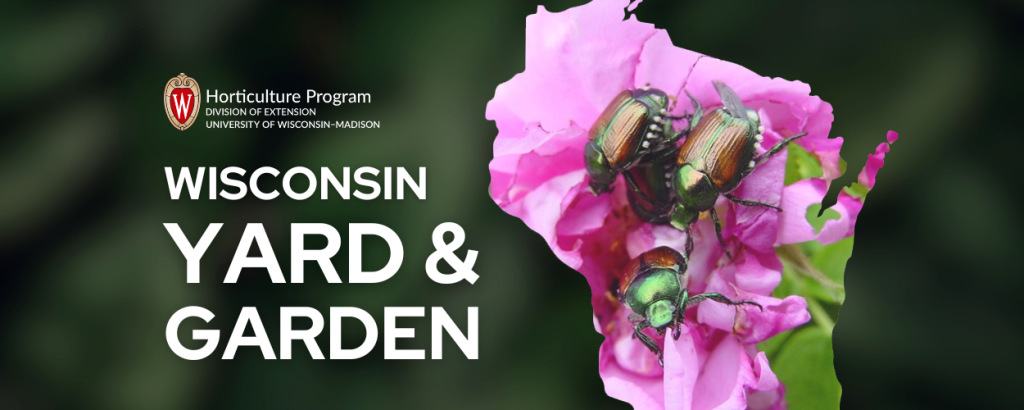
With the growing season underway, problems are bound to occur on yard and garden plants, including insects, diseases, and weeds. Now is the opportune time to review guidelines on managing plant problems wisely.
Always identify plant problems before you try to control them. The Extension Horticulture website (hort.extension.wisc.edu) has assistive resources, including Ask Your Gardening Question, where you may post questions and pictures of your plant problem, along with diagnostic labs to submit physical samples for plant diseases, turfgrass, and insects. Once insects, disease, or weeds are identified, consider all your potential management options, both nonchemical and chemical.
Use extreme care if you use any pesticides. The term “pesticide” includes all chemicals to manage pests, including insecticides for insect control, herbicides to manage weeds, and fungicides for disease management. Whether synthetic or organic in composition, all are regulated as pesticides and need to be used with extreme care.
Read and understand pesticide label information before purchasing, mixing, applying, and storing pesticides. Pesticides are registered with the U.S. Environmental Protection Agency, making product labels federal documents. It is illegal to use pesticides in a manner not specified on the product label.
Labels indicate what types of plants and crops the product can be used on. If you are considering using pesticides on vegetable or fruit crops, make sure edible crops are included on the product label. Never assume pesticides used on trees or lawns are also labelled for edible crops, even if they control the same pest.
Labels tell how much to apply (product rate), so read carefully to ensure you use the proper rate for the specific plant you are applying the pesticide to. Never intentionally exceed the rate on the pesticide label! Labels also give you information on how many applications can be made, time intervals between applications, and time to wait before harvesting fruits or vegetable crops after application. Risks to bees, fish, and other environmental concerns are also found on pesticide labels.
Watch carefully to ensure you apply pesticides only to target areas. Do not spray when it is windy. Avoid applications to blooming plants to reduce harm to pollinators. Stay away from lakes, ponds, and streams and avoid impervious surfaces that may drain towards waterways. Finally, always protect yourself from exposure while mixing or applying pesticides. Wear unlined chemical-resistant rubber or neoprene gloves. Wash thoroughly when you are done applying and store both pesticides and application equipment properly.
Consider all your options to manage plant problems. Oftentimes there are multiple ways to manage them without pesticide use. If pesticides are considered, use them with extreme care to protect yourself and the environment.

About the Author
Bruce Spangenberg is a Horticulture Outreach Specialist with UW-Madison Division of Extension. Get answers to your lawn, landscape and garden questions anytime at “Ask Your Gardening Question.”




